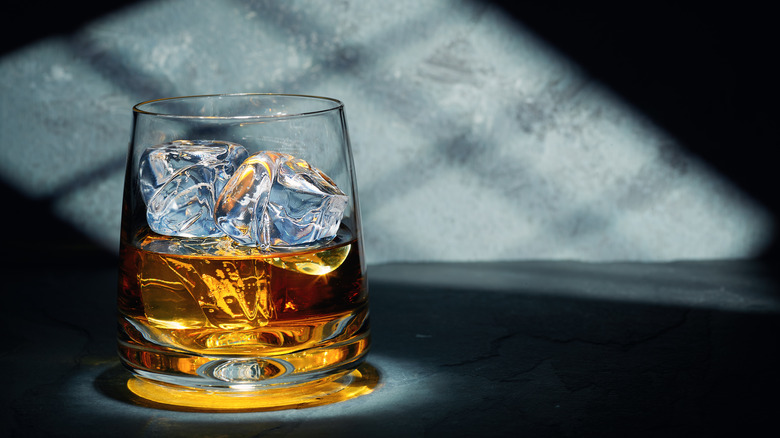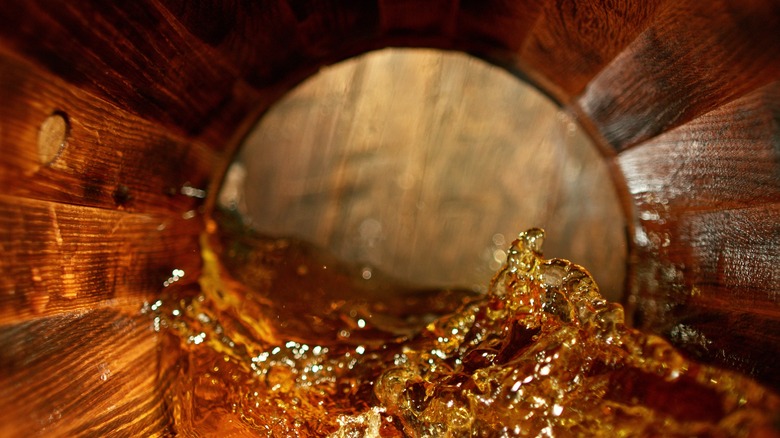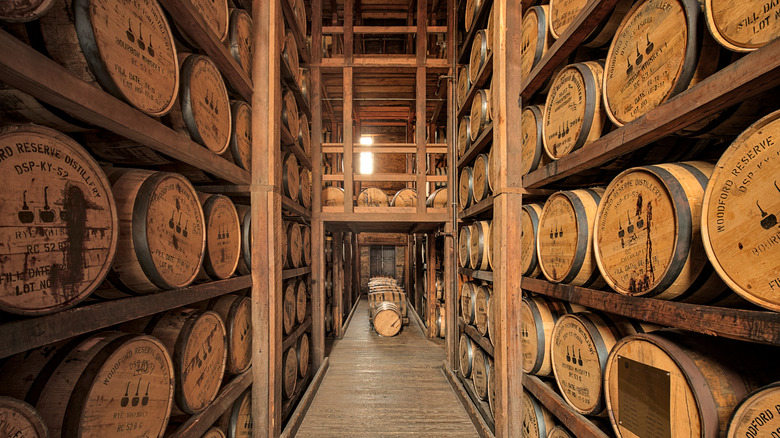What Gives Whiskey Its Signature Brown Color
The color of whiskey is always brown, but not all bottles or brands boast the same shade. Whiskey colors can range from pale gold to burnt amber, with plenty of subtle color variations in between. These hues aren't purely an aesthetic trait, either, as a whiskey color's can also be indicative of its intensity of flavor.
So where do whiskeys get their color? It comes from the barrels in which these distilled liquors were aged. Before before it's aged in barrels, whiskey is clear in color and is referred to as "white dog." Generally speaking, the darker a whiskey appears, the longer it has been aged. But the kind of barrels or casks the whiskey was aged in can also influence color, and some brands use coloring agents like caramel to further deepen the hue.
Legal requirements for aging and the use of colorants vary depending on a whiskey's label. American bourbon, Irish or Canadian whiskey, and Scotch whiskey all have different limitations on the time they're aged and whether or not they can contain additives. By U.S. law, bourbon must be aged in charred new oak barrels, and the use of coloring agents like caramel is forbidden. Bourbons labeled "straight bourbon whiskey" and "bottled-in-bond" also have specific aging requirements. For the former, at least two years of barrel-aging is required, and for the latter, four years is the minimum.
How casks or barrels impart color in whiskey
Casks and barrels give whiskey all of its color, and much of its flavor, too (up to 70%). When placed in barrels, whiskey begins to leach pigments and flavor compounds from the wood. How fast this happens is dependent upon several factors, including temperature and humidity of the aging environment. In warmer climates, absorption is more rapid, and in cooler climates, the process takes longer. The type of wood and the size of the cask or barrel also matter, and the latter affects how much of the wood's surface the liquor is in contact with.
As whiskeys age, they become darker in color and more complex in flavor. This is not just because of the wood, but also ongoing processes like oxygenation and evaporation. The spirit's continued interaction with air, like its interaction with wood, leads to the formation of new flavors and aromas. Evaporation — the so-called "angel's share" – also impacts the finished product, as it intensifies flavors in the whiskey. The level of evaporation can be predicted according to established yearly measures, in order to achieve the desired concentration.
There is a point where aging stops improving the product and instead diminishes it, weakening rather than enhancing flavors and aromas. Exactly when over-aging occurs depends on the type and size of the barrel, but as a general rule, 15 years is the point of diminishing returns, as almost no new flavors will be added past that point.
International influences on whiskey colors
Smaller barrels will impart color and flavor to whiskey faster than larger ones. The size of these containers is generally determined by where the whiskey is made. American bourbon is usually aged in 53-gallon new oak barrels. Scotch, Irish, and Canadian whiskey containers, meanwhile, have a maximum cask size of 700 liters (about 185 gallons), with oak as the favored wood and a prescribed aging period of three years or more. The use of American-style bourbon barrels is also common in these countries, however. In Scotland, nearly all whisky is aged in used bourbon barrels imported from the U.S., while distillers in Ireland also occasionally repurpose bourbon barrels, but sherry or port casks are also quite popular.
Caramel coloring agents, which mimic the hues of extended barrel aging, are legal in many countries, including Ireland, Scotland, and Canada. These coloring agents don't impact flavor, but darker whiskey is so associated with high quality that this practice has become somewhat widespread among lower-quality producers. Colorants are disallowed in the U.S. concerning bourbon production, but it is permissible to use them in other types of whiskey like rye and blended varieties.



